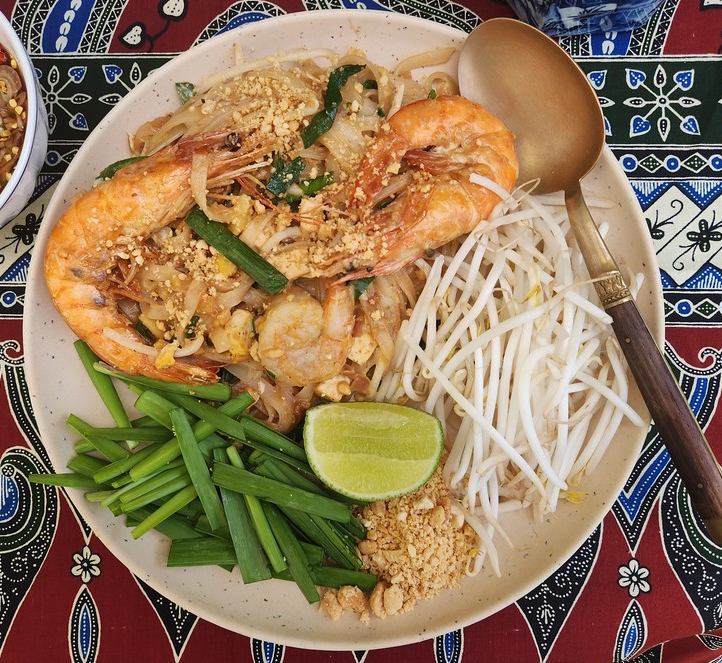
Portuguese Caldo Verdes easy to prepare soup is considered to be Portugal's national dish. It has many variations but, understandably all look like "green soup"!
Enabled by their large fleet of sailing ships Portugal beginning with the capture of the small territory of Ceuta in Northwest Africa and finally coming to an end in 1999 when they turned over Macau to China, Portugal created one of the largest and longest surviving empires the world has ever seen. The time when Portugal began colonizing territories throughout the world is often charitably called the "Age of Discovery," but it was more accurately the "Age of Conquest". Even today Portugal is one of the least diverse places in the world (which contrasts greatly with several of its former colonies). However Portuguese cuisine has been greatly shaped by cross-cultural currents both from former colonies and from France, Spain and Northern Africa. Not only that, but dishes that originated in Portugal can now be found throughout former colonies.
One of these is Caldo Verde (trans: "green broth"). It appeared first in the region of Minho in northern Portugal sometime in the middle of the 15th century. In Portugal the soup is popularly served at weddings, birthdays, assorted holidays such as New Years and events such as the St. John's Festivals in the cities of Braga and Porto. However, Caldo Verde can be and is eaten on any day; it's a staple dish. In Portugal it is often eaten with a corn/rye bread called Broa de Milho. The dish is mentioned in many books by Camilo Castelo Branco, Portugal's most prolific novelist. In Brazil is often served during the winter festival, Festa Junina (June Festival).
Meat, poultry and especially fish are common ingredients in Portuguese dishes. Ideally (or perhaps, most commonly) chouriço (in Spain chorizo) or milder linguiça (smoked Portuguese sausage) is added to Caldo Verde. Chouriço is a fermented, cured, smoked sausage that is either eaten cooked or "raw" (but, again, it is fermented and smoked). Mexican Chorizo is entirely different and not used in this dish. Portuguese chouriço and Spanish chorizo are dark red in color due to the addition of copious amounts of dried and smoked red peppers (pimentón/pimentão). However, salt pork, other types of smoked sausage or bacon can be substituted. Or you can completely eliminate any meat, substitute vegetable stock and have a delicious vegetarian soup. Another common variation is in the selection of the leafy vegetable to flavor the soup and color it green. More traditionally Portuguese collard greens (couve galega) are used, but many recipes use kale (closely related to collards) or mustard greens. Collard greens have a very long history (they were consumed in Greece 2,000 years ago) and are eaten in many countries and regions throughout the world, from Brazil and the United States to Kashmir, parts of Africa and many places in Europe. In Brazil, Portugal and in the Southern United States collards are also grown as garden ornamentals! There are many regional variations of caldo verde and, as is always the case, considerable variation from cook to cook. Some recipes add white beans for an even heartier soup. Often the potatoes are pureed before the addition of the collards, and often chicken stock is used instead of water. Some recipes don't puree the cooked potatoes, adding heavy cream as a thickener. In Portugal the chouriço is added to the dish right before serving, but in Brazil it is cooked with the soup. Another difference is that in Portugal Caldo Verde is typically eaten with Broa de Milho, but in Brazil toast or French rolls are more common.
Caldo Verde Ingredients:
- 6 cups of water (or chicken stock)
- 3 pounds of potatoes, peeled and diced. Note, if you puree the potatoes, use russets. If you want to have chunks of potato, use yukon gold or white potatoes.
- 1 large onion, chopped
- 2 cloves garlic, chopped finely or crushed
- 1/2 cup of Portuguese olive oil (or extra virgin olive oil)
- 1 pound of collard greens or kale, stems removed and thinly sliced
- 10 ounces of 1/4 inch wide sliced Chouriço, Spanish Chorizo or other smoked sausage
- Salt and Pepper to taste
Caldo Verde Preparation:
- Bring the water or chicken stock to a boil.
- Add to the water the potatoes, onions, and garlic.
- Boil for 20 minutes (note: if you want chunks of potatoes, see note above about potato choices and only boil for 10 minutes).
- Reserving the liquid, strain, let cool and then puree the potatoes in a blender, hand mixer or food processor.
- Lightly fry the smoked sausage and set aside.
- Return the broth and pureed potatoes to the pot and bring to a boil.
- Add the collards and the olive oil to the pot and boil for an additional 6 minutes.)
- Add the sausage to the pot cook for an additional minute. (Note: Some cooks add the sausage slices to the individual servings)
- Serve with salt and pepper on the side and Broa de Milho.
Broa de Milho Ingredients:
- 4 1/3 cups of cornmeal
- 2 cups rye flour
- 1 cup all purpose flour
- 1 3/4 cups boiling water
- 3/4 cup plus 2 tablespoons of hot water(95°F)
- 1 package of baker's yeast
- 4 teaspoons of salt
Cook's Note: There are two kinds of yeast that are most commonly used for baking: "Active Dry Yeast" and "Fast Rising, or Fast Acting". Either can be used. However, Active Dry Yeast, being slower should be "proofed" before using. This is done by mixing the yeast with 2 tablespoons of hot water (105 - 115°F) and 1/8th teaspoon of sugar, letting the mixture to ferment for 5 to 10 minutes before using. This recipe calls for 3/4 cup of hot water plus 2 tablespoons of hot water, making it easy.
Broa de Milho Preparation:
- In a mixing bowl, mix the cornmeal with the boiling water and let sit for 1 hour.
- Thoroughly mix the hot water and remaining ingredients into the hydrated corn meal.
- Knead into a ball, return the dough to the mixing bowl, cover and let rise for 7 or more hours at room temperature.
- Form the dough into a loaf and generously powder the top with all purpose flour.
- Bake at 400°F for 1 hour on a pizza stone (best), cast iron pan or baking sheet. If you use the pizza stone or cast iron pan, place it in the oven when pre-heating and keep at 400°F before placing the dough on it.
- Cool before slicing.
Bom apetite!
Recipe and cultural introduction by Priscila Damasceno & T. Johnston-O'Neill
Photos by Shari K. Johnston-O'Neill









